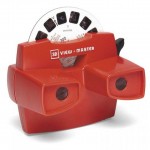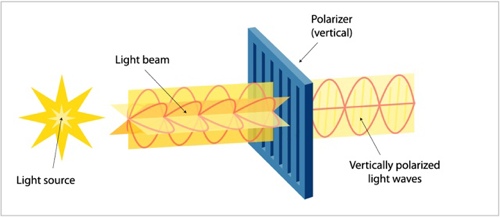How do 3-D films and 3-D glasses work?

In Essence 3-D films are a simple variation of the stereovision systems that you see used in tourist trinkets and children’s toys. In fact you may remember the ViewMaster™ that showed all the cool Disney characters in full 3d? The ViewMaster™ allowed you to look at two pictures of the same thing taken from a slightly different view point and tricked your brain into seeing one 3d image. Those devices presented two different views a few centimetres apart from the viewpoint of the human eye. The left image is presented only to the left eye and the right image is sent directly to the right eye. However the technology for a 3-D film is more complicated, because the filmmaker must invent some way to keep the left eye from seeing what only the right eye is supposed to view, and visa-versa, even though both images are being projected on the screen simultaneously.
A History…
The first system was invented in the 1890s, the images were called anaglyphs. The left-eye image was projected with a red-coloured filter over the projector lens and a blue-green filter was put over the lens of the projector for the right-eye image. Glasses with the same colour filters were used in viewing the images – the red filter for the left eye transmitted the light from the left-image projector and blocked the light from the right-image projector. This same system has also been used to print such things as stereo comic books and has been used experimentally with stereo images broadcast on colour television.
The only problem with this technology is that it works best with monochrome images. The red and blue-green tints of the glasses add unwanted and unsubtle colouration to a colour 3-D film.
Modern 3-D films …
The solution, came from the Polaroid company, which developed, appropriately enough, a polarisation method specifically for 3-D films. Two synchronized projectors project two respective views onto the screen, each with a different polarization. The glasses allow only one of the images into each eye because they contain lenses with different polarization. The angle of polarisation for one eye is at right angles to that for the other eye, so that one image is transmitted while the other eye is blocked.
Polarisation …
This leads us to the next question; How does Polarisation work?
Light is emitted as waves from a light source (like a film projector). These waves are emitted in all directions at ‘different angles’ (see graphic below). If a polarisation filter is applied to the light source only waves exactly parallel to the slit will pass through whilst all others are absorbed or reflected away. In this way you cane ensure each lens on your glasses only receives the correct light source beamed out of the left & right eye projector.








You must be logged in to post a comment.